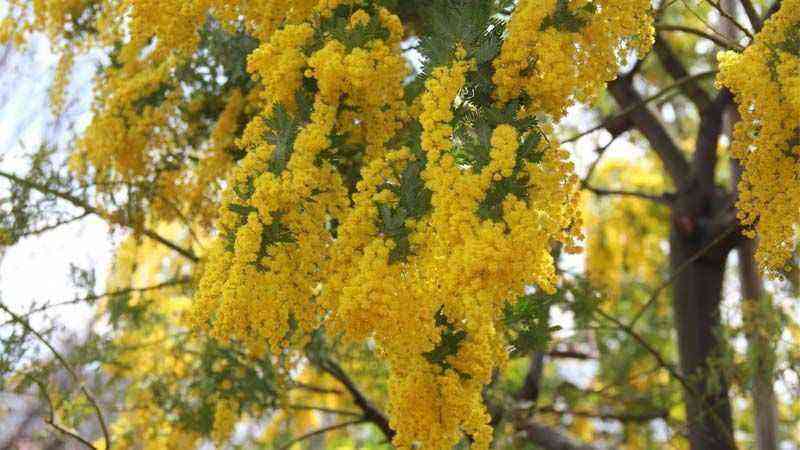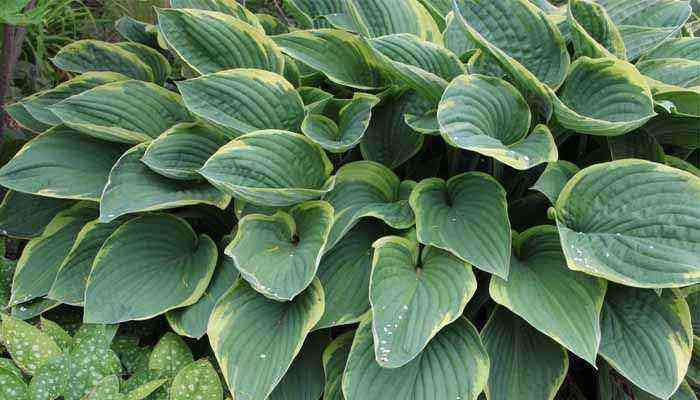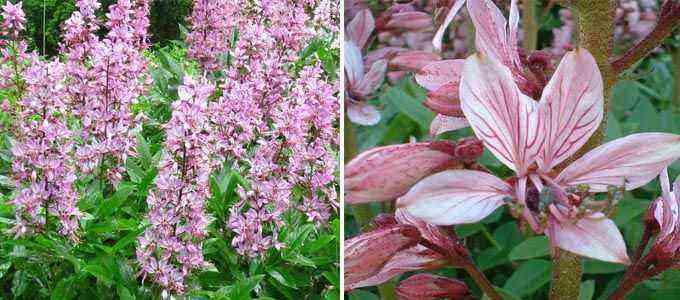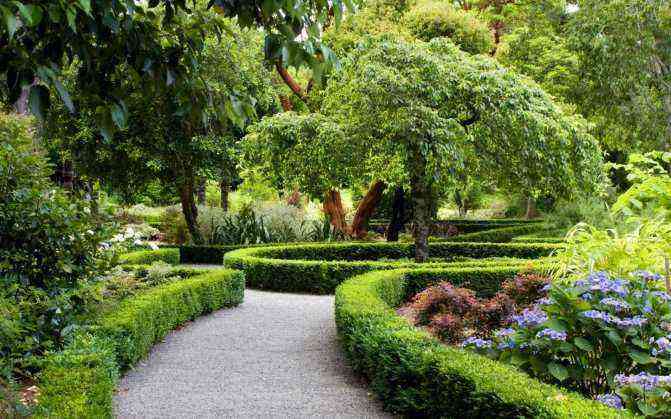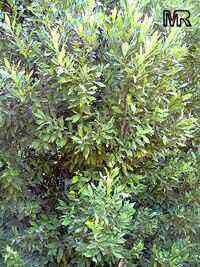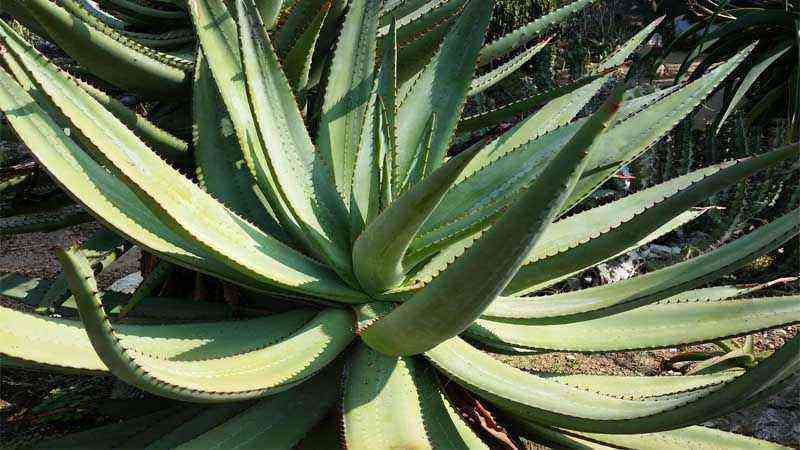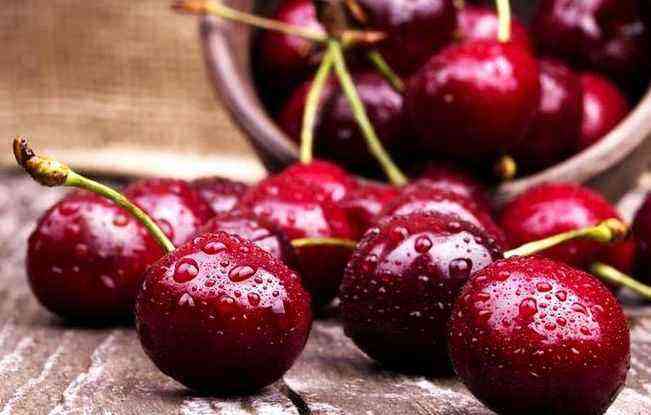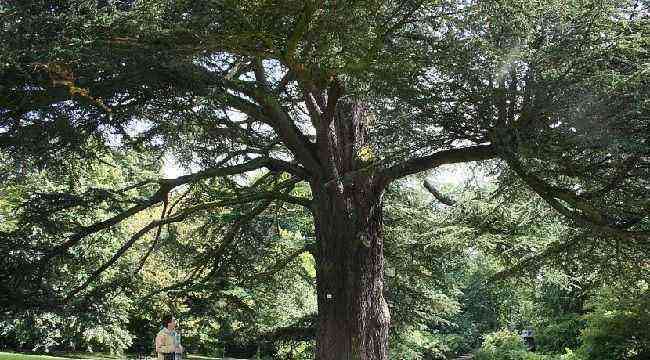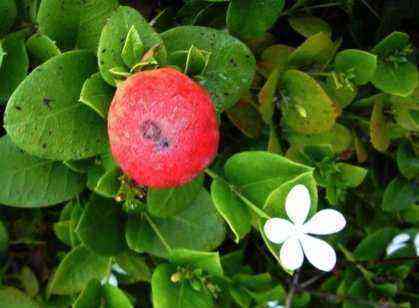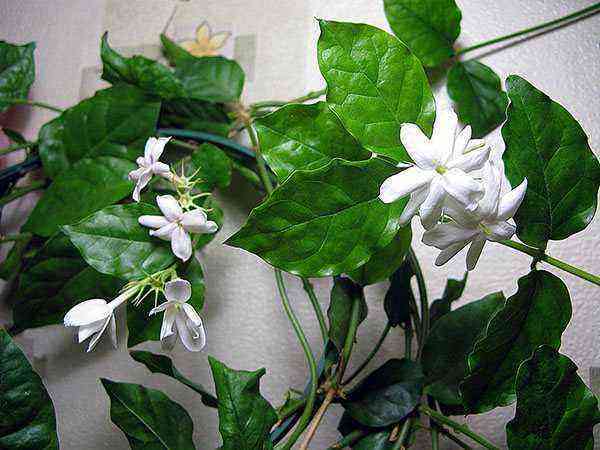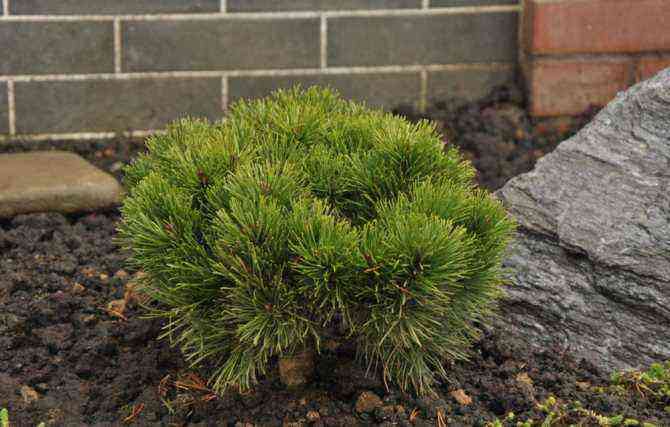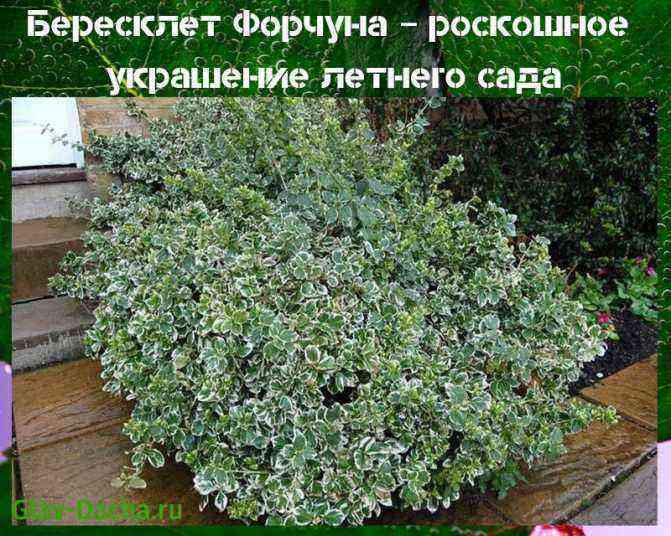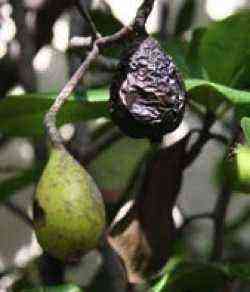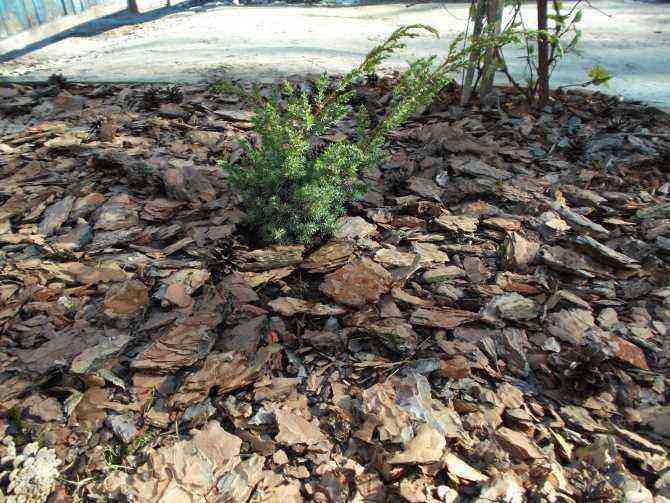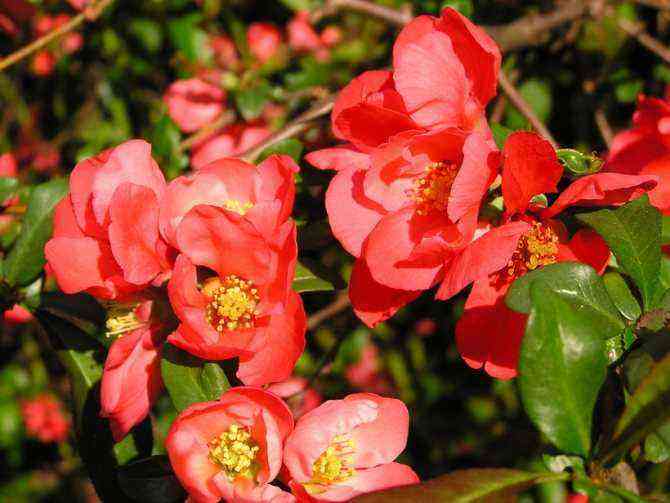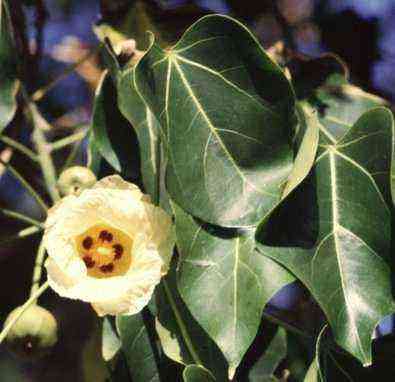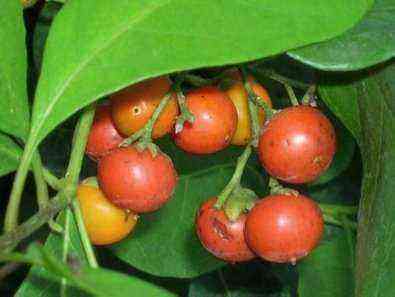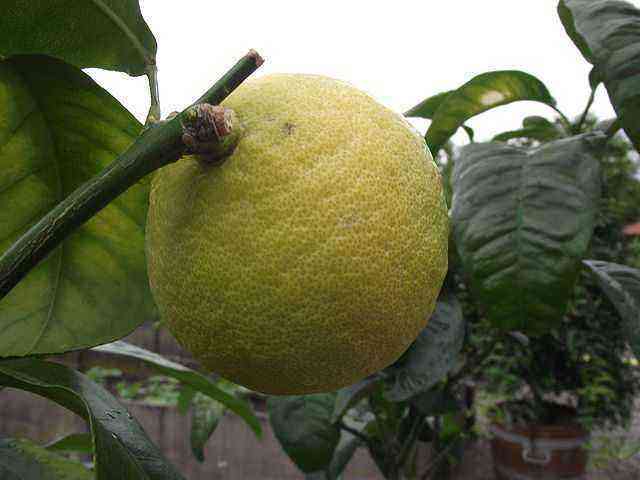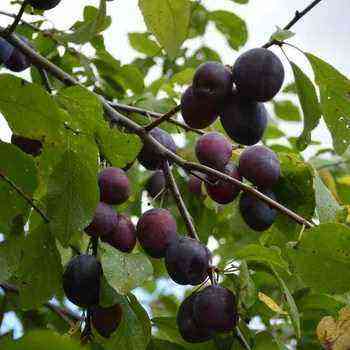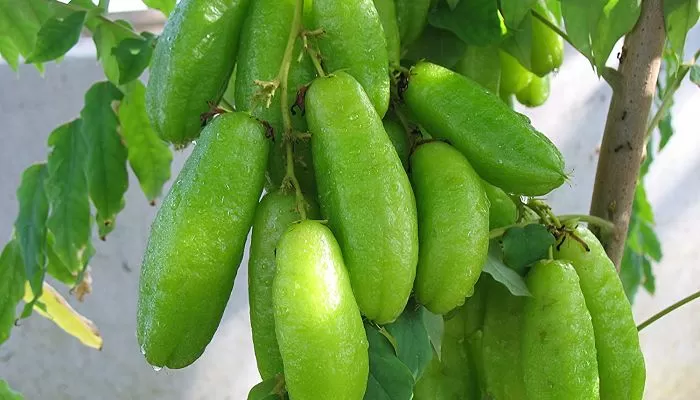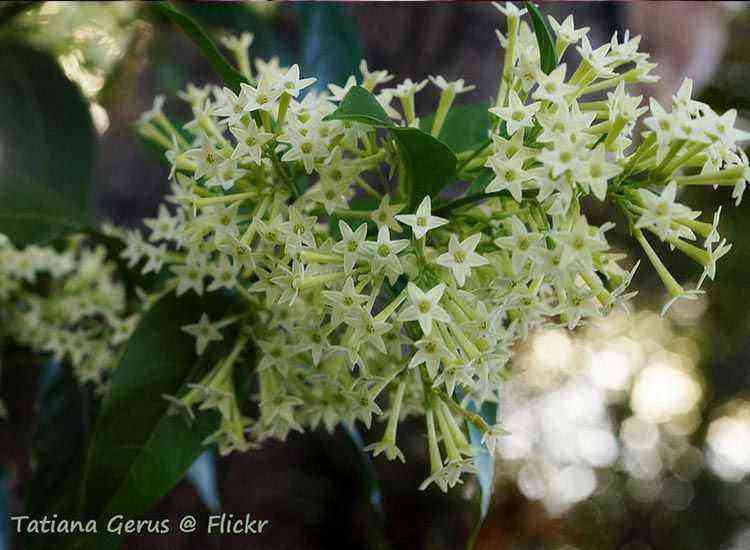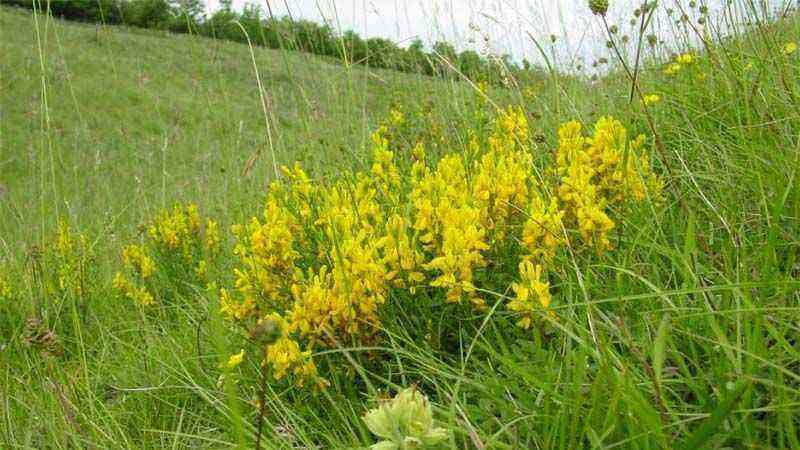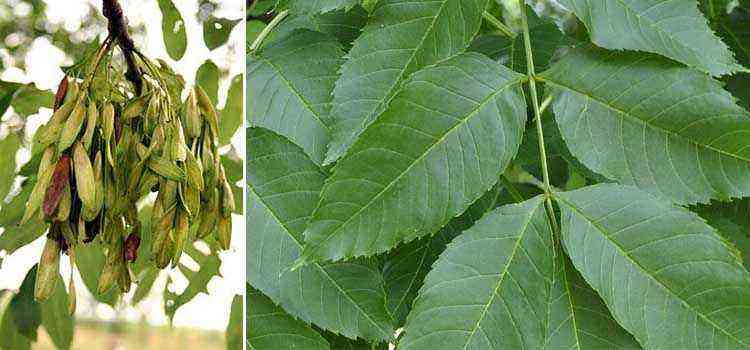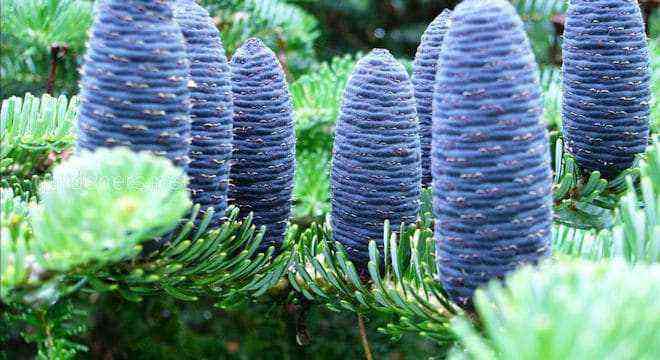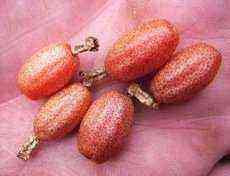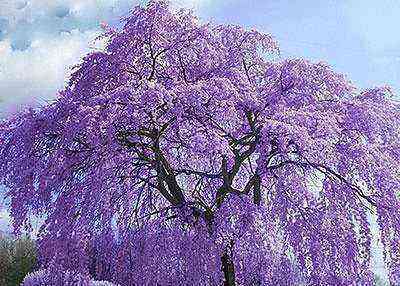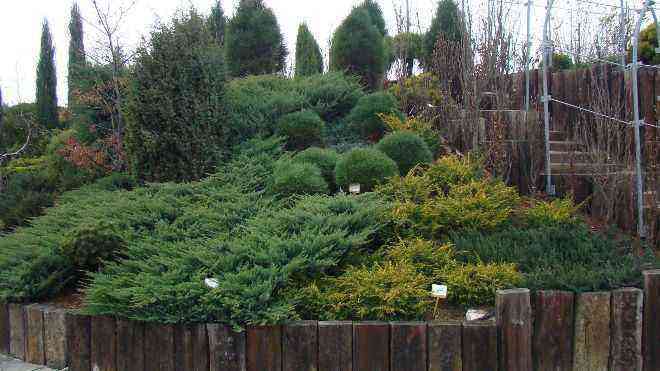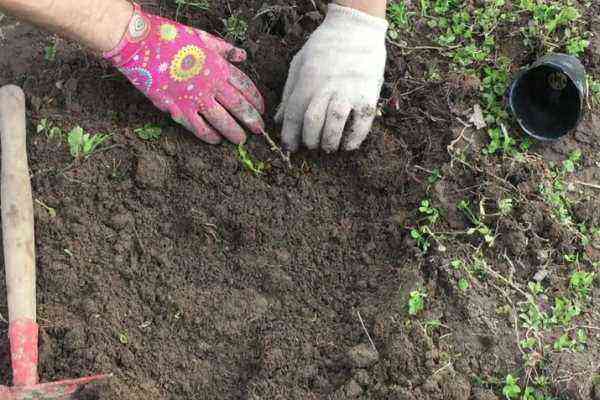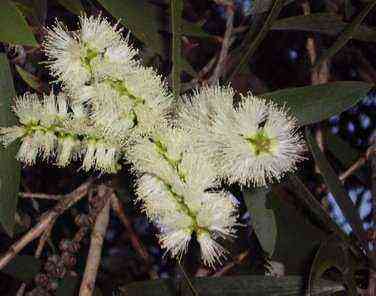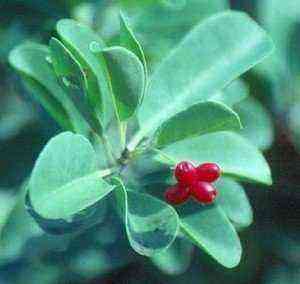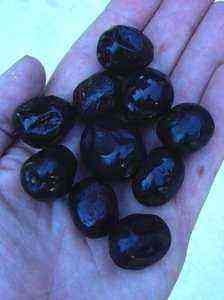- Japanese quince varieties for the Moscow region
- Landing requirements
- Care measures
- Harvesting
Quince is an attractive plant and tasty fruit, but it cannot be grown in every region of Russia, even in the Moscow region, where conditions for fruit cultivation are relatively favorable. First you need to understand why you want to grow this tree: for decoration, for obtaining fruits, as a medicine. Planting a Japanese quince and caring for it in the Moscow region is not difficult for summer residents armed with the appropriate knowledge.
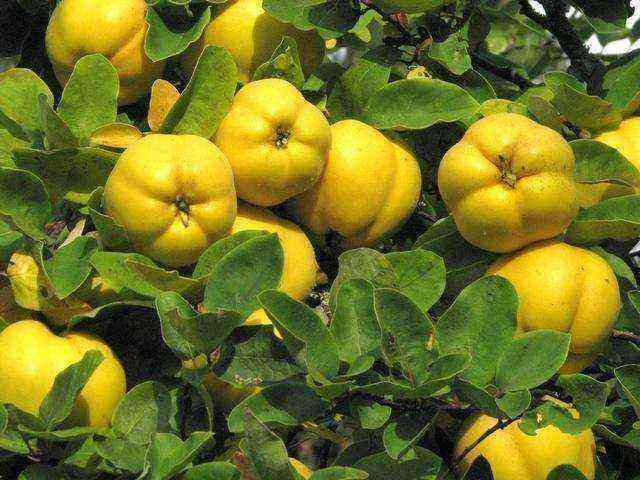
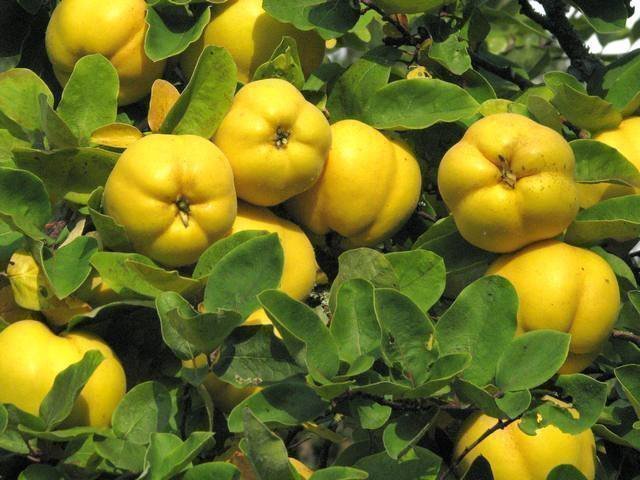
The best varieties of quince
In order to find out which quince seedlings to buy for the Moscow region, you need to familiarize yourself with the quality characteristics of the most common varieties. Leading breeders advise paying attention to the following variety names: Muscat, has a high resistance to cold, the weight of the fruit reaches 200 g, the variety is self-fertile and does not require pollinator trees. Nikitskaya, is the earliest variety, plant growth is average, has good winter hardiness. Northern, the most unpretentious variety to weather conditions, the rootstock of this species is used for growing pears and peaches, the fruits are distinguished by their high taste and large size. Teplovskaya, is distinguished by long storage of fruits, the plant is medium-sized, ripening later.
When buying quince seedlings for the Moscow region, you must first of all pay attention to resistance to cold and high temperatures, since the quality and chemical composition of fruits in all varieties is approximately the same. It is recommended to purchase seedlings only in trusted stores from leading manufacturers of planting material. Plants with a closed root system should be preferred when buying.
Japanese quince is also called chaenomeles.
It belongs to ornamental plants and is a low-growing shrub with many large flowers. The flowers are about 4 cm in diameter and are colored orange-red.
Japanese quince is an unpretentious frost-resistant plant. Caring for it is easy, and admiring the beautiful flowers and enjoying the taste of its fruits is a great pleasure.
Common quince and its relatives
The familiar or oblong quince (Cydonia Vulgaris Pers or Oblonga Mill) is the only member of the genus Cydonia of the Rosaceae family. These are tall trees or shrubs with large fruits.
Once the common quince belonged to the same genus together with pears and apple trees. Then it was combined into one genus along with Japanese, Chinese and evergreen quince. Since these plants have a lot in common. However, there were still more differences. Therefore, with the further development of science, all these plants were separated and each was singled out into its own genus. Chinese quince – Pseudocydonia, evergreen quince – Docynia. Japanese quince – Chaenomeles.
What is interesting about Japanese quince
The features of this plant are as follows:
- The shrub begins to bloom in May days. Its buds do not open at the same time, but gradually. Thanks to this, the plant remains bright for two to three weeks.
- The fruits appear in the summer against the background of bright foliage with a glossy coating. Japanese quince ripens in autumn, when it is covered with yellow fruits – similar to apples, but small.
- As a rule, chaenomeles is bred as an ornamental shrub. Usually it is planted in two or three plants in flower beds or alpine hills. Japanese quince is often combined with mahonia, spirea, forsythia.
- Quince has a very developed root system that compresses the soil. This feature is used to strengthen slopes.
- Certain varieties of chaenomeles are covered with very sharp thorns, which makes it necessary to be careful when caring for it.
- Quince is a cold-tolerant plant. Due to the fact that it can withstand frost up to 25 o, it can be grown in the suburbs. If frost comes at 30 o, then only the buds will freeze a little, but the bush itself will remain alive.
- Chaenomeles is a long-liver. If properly cared for this plant, it can “hold out” up to 40 years.
Japanese quince – the use of a shrub in landscape design
Chaenomeles is a plant that is great for landscaping. Let’s consider several options for its use:
- in hedges;
- as a soloist against a background of green grass;
- in group plantings, especially in combination with plant varieties, the flowers of which have different colors;
- can be grown together with spring bulbs (muscari, tulips, daffodils, etc.);
- Japanese quince can be planted as a shrub or small tree;
- especially suitable for gardens made in Japanese or Chinese style;
- goes well with conifers and spring-flowering shrubs (kerria, spirea, forsythia, etc.).
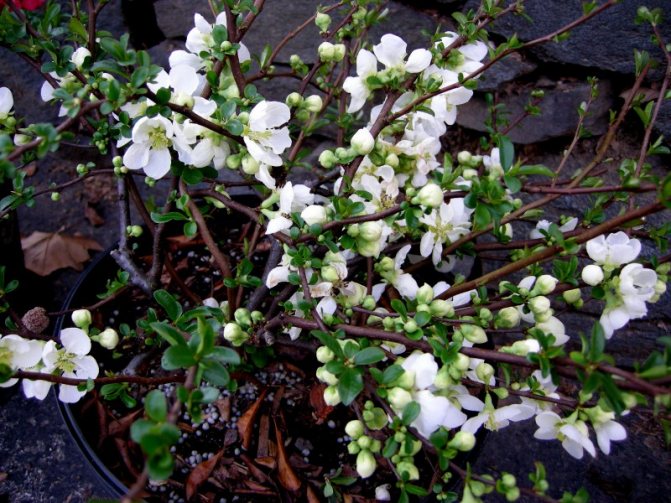
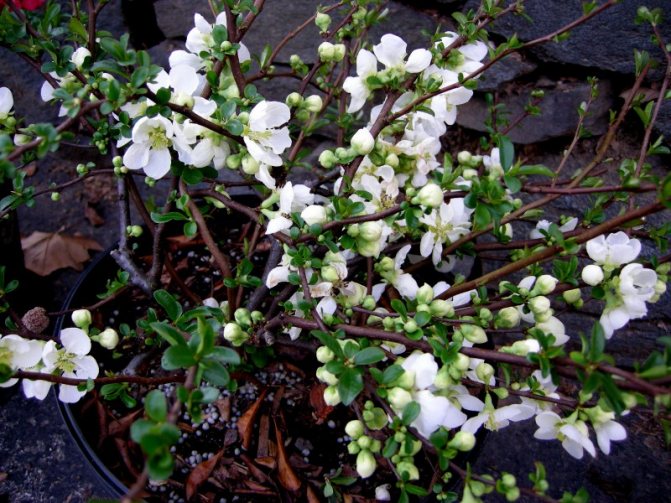
The spring flowering of quince is simply breathtaking
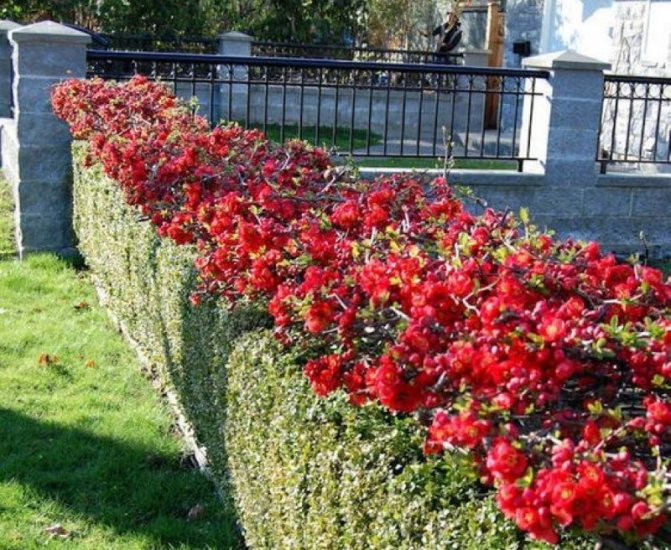
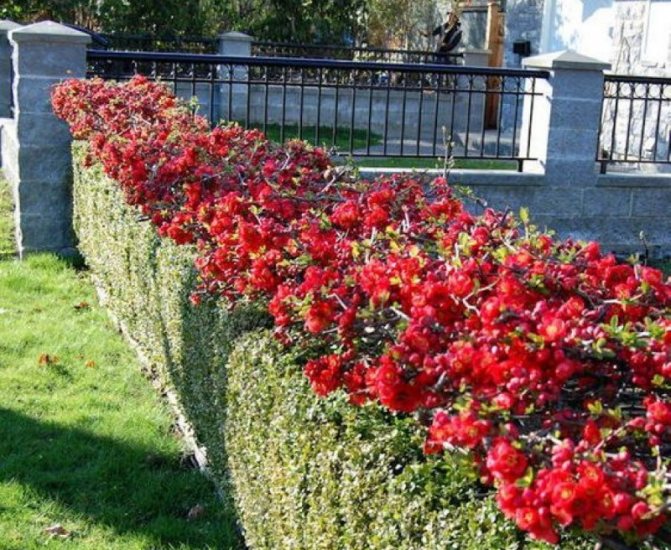
Japanese quince tolerates haircut well
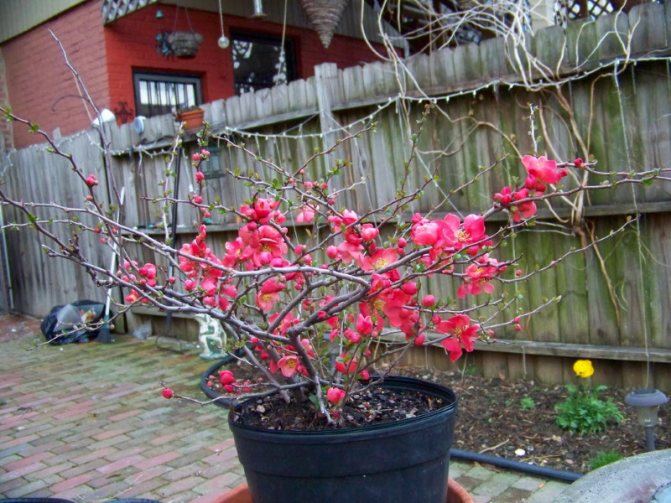
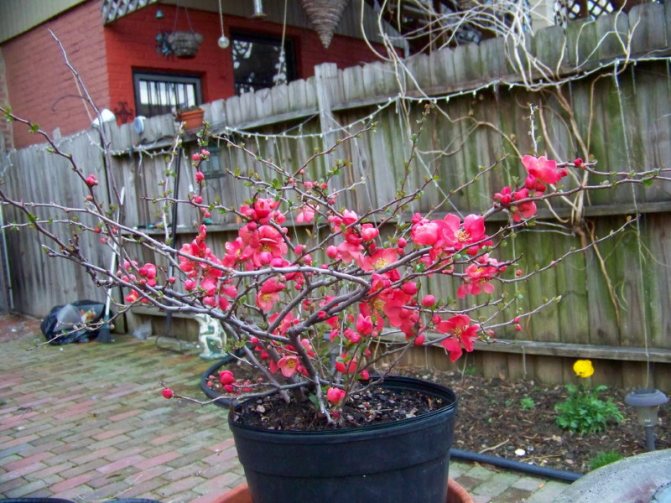
In warm climates, quince can be grown in pots
Spring flowering shrubs undoubtedly bring a special joy after gray winter days in any garden area. Thanks to henomeles, it will turn into a fabulous corner and become a reminder of distant Japan.

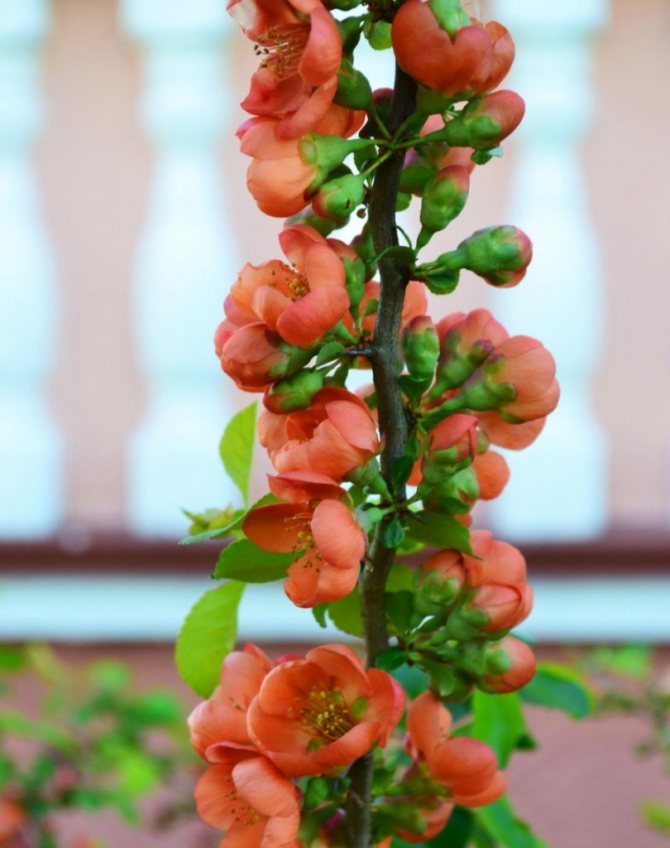
Luxurious, bright pink flowers appear on quince branches even before the leaves are completely blooming.
In autumn, the plant bears fruits that are very useful and are often used for preparing food and drinks.
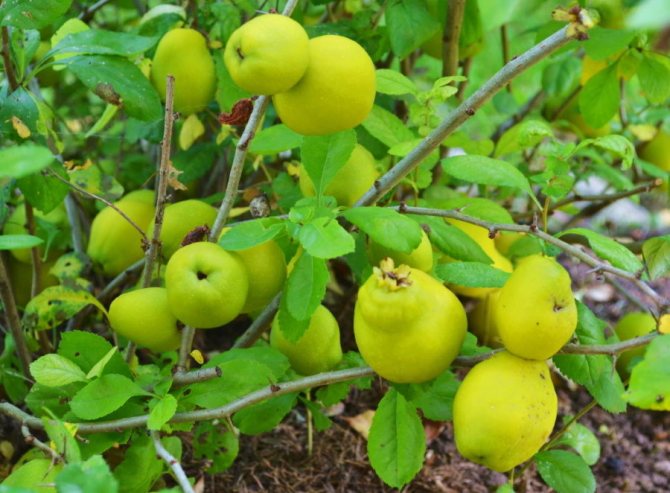
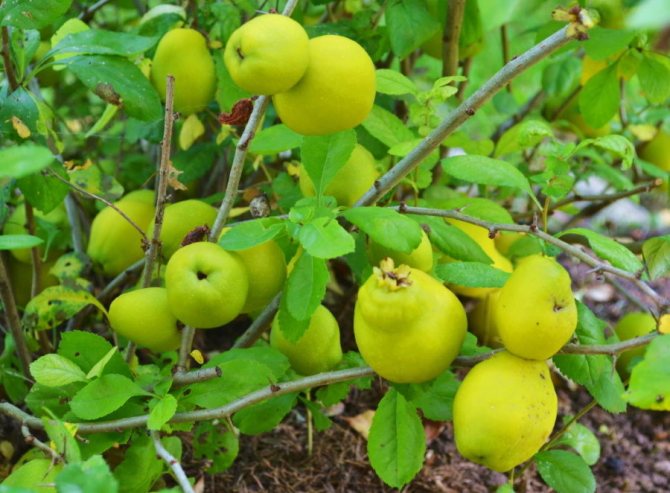
Quince fruits contain a large amount of vitamin C, the taste is rather sour

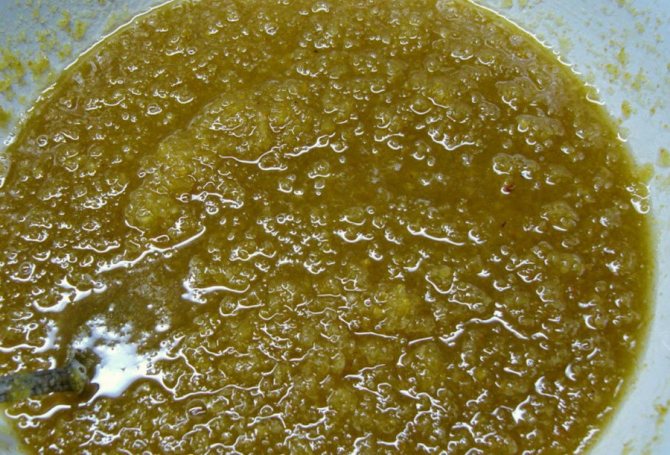
Japanese quince jam is often used to prevent colds.
Landing conditions
Although Japanese quince is an unpretentious plant, there are a number of rules associated with planting it:
- Chaenomeles will only grow well in sunlight. Otherwise, its flowering will be weak.
- In order to prevent the bushes from freezing in winter, they need to be planted in places that are not blown by northern winds.
- The soil for planting should be chosen with a weak acidity – with an indicator not higher than 6,5 pH.
- This shrub needs to be planted once, because due to the impressive length of the central root process, it does not tolerate transplanting well.
- The distance between the bushes should be large – about one – one and a half meters. If you want to get a hedge at the exit, the gap should be reduced to 80 cm.
- It is better to plant Japanese quince in the spring season. If planted in the fall, then it may not have time to gain a foothold in the ground with roots and eventually freeze out.
Preparing a landing site
It is recommended to plant quince in spring, at the end of April, when the air and soil are warm enough. First of all, you need to choose the right place. Often the shrub is planted in shaded areas, which affects its development and subsequent fruiting. Therefore, the place should be sunny, protected from drafts, with deep groundwater.
Optimally chosen location guarantees lush color, bountiful harvest and sweet fruits.
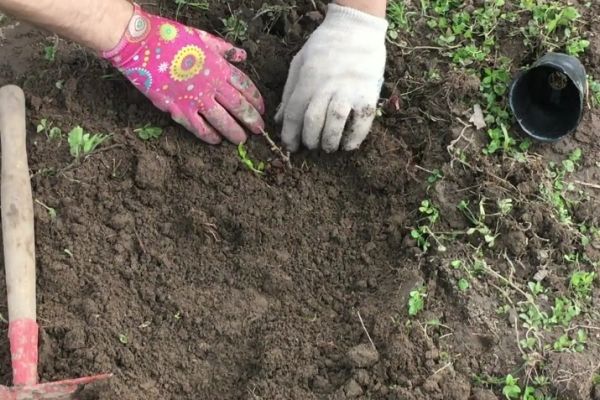

No special soil is needed for the plant, however, the acidity should not exceed average values. It is also better to choose areas with loose soil, which will provide normal air circulation and moisture evaporation. If the groundwater is too close to the surface, then it is necessary to take care of high-quality reliable drainage.
It is recommended to prepare the soil in the fall. To do this, they dig up the ground on the site, remove weeds and other plants, sprinkle with leafy soil and sand and fertilize with organic and mineral fertilizers. If the acidity level is higher, then additionally slaked lime or lime flour is added.
Planting instructions for Japanese quince
You need to plant Japanese quince in the following sequence:
- Dig a 60 x 60 x 50 cm planting hole.
- Take one bucket of humus and add half a kilogram of wood ash and 300 grams of superphosphate to it.
- Stir the contents with a shovel, adding a little earth first.
- Place the seedling in the hole so that the beginning of the rhizome coincides with its upper edge.
- Cover the roots with soil completely.
- Sprinkle with plenty of water.
- Cover the soil around the shrub with sawdust, fine bark, peat, hay – to prevent its weathering and leaching.
Note! Chaenomeles is characterized by cross-pollination. In order for it to be carried out most successfully, and the yield of quince was higher, it is advisable to plant two or three bushes nearby.
The planting process
The process of planting the Japanese variety is no different from planting the common quince. You need to follow these rules, and everything will work out for you:
- If you are planting several shrubs at once, observe the required distance: fruiting trees at a distance of 1–1,5 m, for decoration – up to 1 m.
- The dimensions of the hole should not be less than 40 cm in diameter and half a meter in depth.
- For better growth, ⅓ pits need to be filled with a nutrient mixture consisting of ash, superphosphate and humus.
- The roots of the plant should not come into contact with fertilizers, so the top dressing is covered with a layer of soil.
- The seedling is placed in the middle of the hole so that the root collar is flush with the surface.
- The roots are gently straightened and covered with soil, lightly tamping.
- After planting, the bush must be watered abundantly.
- If there is a need, then the near-trunk zone is mulched.
Chaenomeles care
When caring for chaenomeles, there are also a number of features:
- Water the seedlings sparingly. In no case should you overmoisten the soil so that the roots do not start to rot. And you also need to periodically loosen the soil around the bushes.
- Top dressing can be omitted for two years after planting, since all the necessary nutrients have been included in the soil in advance.
- Fertilizing adult plants should be started in early spring, as soon as the snow melts. They need ammonium nitrate, about 20 grams per bush.
- In the summer, organic fertilizers are used, such as waste from domestic animals or birds. Superphosphate is introduced in the fall.
- Despite the frost resistance, young plants in areas such as the Moscow region are still better insulated. For this purpose, you can use spruce paws or special materials – lutrasil, spunbond. It is recommended to put boxes made of wood or plastic on top of the covering material and sprinkle them with dry leaves.
On a note! With proper care, Japanese quince begins to bear fruit from the third year after planting, and then bears fruit annually.
Japanese quince reproduces in several ways.
Features of care

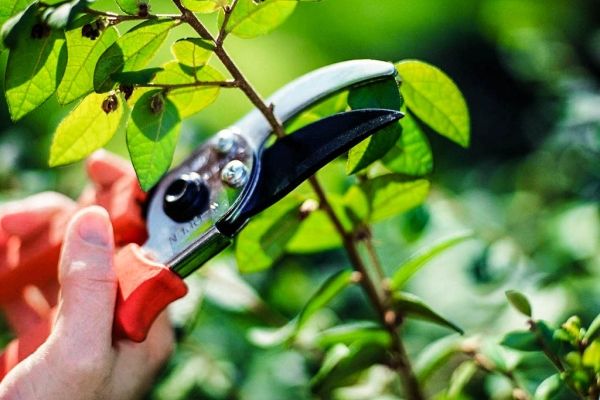
Although the quince tree is quite unpretentious, it needs regular maintenance. Timely and correctly carried out agrotechnical procedures contribute not only to the development of the bush, but also to its yield.
First of all, you need to take care of regular and sufficient hydration. Quince loves moisture, so it needs abundant watering. Especially in the heat and in the absence of precipitation. There are varieties that can withstand frosts up to 30 ° C, but in harsh winters, it is better to cover the plant by first bending the shoots to the ground. For shelter, you can use spruce branches or special covering material.
Don’t forget about sanitary and formative pruning. To form, the bush can be pruned several times a season, sanitary pruning is carried out in the spring, before the start of sap flow. You also need to regularly prune dry and affected shoots. In the first year, you do not need to feed the quince: it will have enough fertilizers applied during planting.
But starting from the second year, the plant is fed with different types of fertilizers, according to the growing season. Liquid fertilizers are not suitable for Japanese quince, so it is better to use wood ash, leaf humus, granular or dry mineral mixtures (nitrogen, phosphorus, potassium). Peat and sawdust can be used for mulching.
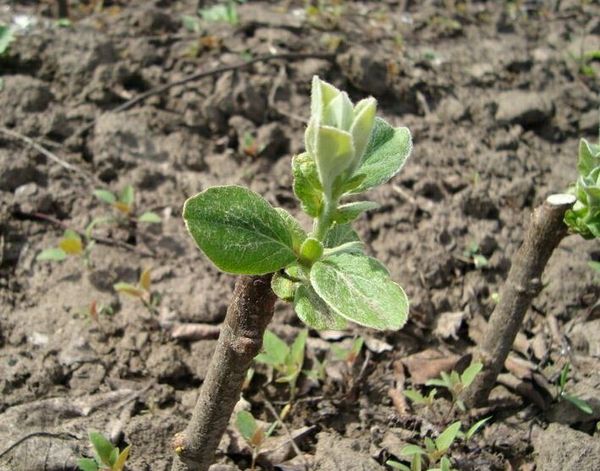

Basically, all varieties of quince are resistant to all sorts of diseases and pests. However, if your shrub grows with other fruit trees, then it is unlikely that you will be able to avoid the attack of parasites.
Apple scale insects, weevils, leaf beetles, aphids and mites can easily destroy not only the crop, but also the plant as a whole. Therefore, preventive measures should be taken regularly to protect the tree from fungal infections and parasites. Bordeaux liquid and fungicides will effectively deal with this problem. You also need to remove leaves, dry and damaged shoots and rotten fruits in time, dig up the soil.
We hope that our recommendations will help make your garden more perfect.
Reproduction by seeds
Important! When propagated by seeds, chaenomeles loses some of the qualities inherent in this variety. Therefore, this method is used for growing rootstocks for subsequent grafting..
You need to know the following about seed propagation:
- After the quince gives seeds in the fall, they must be placed in wet sand for the whole winter. In this case, the ambient temperature should be close to zero. In such conditions, the seeds undergo stratification.
- You need to sow seeds in February – March in special planting boxes.
- After a month and a half, the seeds are distributed in separate containers.
- By the end of May – beginning of June, landings in open ground are carried out.
- During the summer, the sprouts are watered and fertilized.
- In winter, it is necessary to insulate the seedlings with dry foliage.
- Chanomeles seeds germinate well. Therefore, seedlings require thinning. In this case, you need to remove the weakest of all.
There is another planting method – without wintering in wet sand. Seeds can be planted immediately in the beds, covered with earth, covered with plastic and a layer of fallen leaves.
Note! Stratification is a process that mimics the natural conditions of winter in order to increase seed germination. For Japanese quince, it is shown if the seeds are planted in spring. When planting in the fall, natural stratification occurs.
Reproduction by cuttings
The process of propagation by cuttings is called grafting. It is carried out at the beginning of summer as follows:
- First, you need to cut the cuttings that are one year old, along with the so-called heel. The heel is a piece of wood left over from last year.
- Slices in order for the cuttings to take root better, need to be processed with “Kornevin”. This plant stimulant contains acid, which irritates the tissues of the integument and promotes the appearance of callus. Callus are growths formed from living cells closest to the wound.
- Further, the cuttings are planted at an angle in a small school – a mini-bed, on which you grow plants that have different growth periods.
- In order to maintain the desired level of humidity, the planted cuttings are covered with polyethylene.
- In the fall, the obtained seedlings are determined to a permanent place. Sometimes this is done in the spring.
On a note! You can cut the cuttings in the fall. In this case, they are buried under the bush at a depth of about 25 cm. In this case, you must not forget to mark the place. In winter, callus forms at the tips of the petioles, and in spring they are planted permanently..
Other breeding methods
Among other methods of reproduction of chaenomeles, there are also such as dividing the bush and horizontal layers.
Division of the bush
Reproduction by dividing the bush is the easiest way for Japanese quince. For its implementation, the root shoots of the mother bush are taken – young plants that have grown from buds located on the surface roots. Shoots, which have well-developed roots, are separated from the root shoots and transplanted into the ground.
Horizontal Lines
Chaenomeles often grows shoots that spread along the ground. If you bury them, then seedlings will grow from them. They are used for further reproduction. And you can also tilt close to the ground and those shoots that grow in a horizontal direction. Then they are added in the same way as the creeping ones – to obtain seedlings.
Correct pruning
Shaped pruning Chaenomelesa begins to be carried out from the fourth season, since only at this age the shoots of the bushes begin to branch. Shoots that grow inside the bush are cut out, excess shoots growing from the roots, leaving no more than 3 young stems annually. Stems that grow along the ground should also be pruned.
Remove all weak and thin branches, leaving them in the bush no more than 10 shoots… In the process of pruning, sufficiently young branches (which are 4 years old) should be left, older shoots should be removed.
Japanese quince is a beautiful ornamental shrub that also produces tasty and healthy fruits. With proper care, it can grow in one place up to 35 – 40 years old, delighting with its flowering and good yields.
How to properly prune Japanese quince
This plant tolerates the pruning process calmly. But it is “poorly tolerated” by some gardeners because of the sharp thorns of chaenomeles. Therefore, they do without pruning. But this decision can hardly be called correct. In order for the quince to grow successfully and form a beautiful crown, it needs pruning.
There are three types of quince pruning:
Sanitary… This type of pruning involves removing branches such as broken, dried and frozen branches. It is practiced in early spring.
Formative… It is done starting from the moment when the plant will live up to four years. During this period, the process of branching begins. Formative pruning serves several purposes.
- Firstly, it is preventing the strong growth of the bush in width. For this, excess root shoots are removed, and no more than three young shoots are left.
- Secondly, thickening is avoided – by cutting out the shoots growing inward.
- Thirdly, so that the nutrition of the bush is not taken away, shoots creeping along the ground are removed.
Rejuvenating pruning is done after the bush reaches 8 years of age, when in one year it grows less than 10 cm.It is necessary to remove the shoots that are the thinnest and longest, and leave the strongest ones, reaching 10 cm.When thinning the bushes, one must not forget that 3-4-year-old processes should be left, and older ones should be removed.
Fight against diseases and parasites
The main care of young trees includes preventive treatments for diseases and pests.
Prevention
The preventive measures are as follows:
- regular inspection of plants for the invasion of parasites and the appearance of diseases;
- keeping the site clean (timely removal of weeds, seasonal digging);
- autumn processing of near-trunk circles with slaked lime;
- pruning of all rotten, shriveled and frostbitten branches;
- spring and autumn treatment of the crown with insecticides and fungicides.
“Fundazol” is a common fungicidal agent
Treatment
The most dangerous pests for this tree are scale insects, leafworms and weevils. If the plants are planted next to other fruit plantations, they are often invaded by spider mites, aphids, moths and other parasites. You can destroy such pests with the help of systemic fungicides. Three-fold processing of the crown and soil around the trunk circle is carried out at a frequency of 10 days.
Often, this fruit tree is affected by a bacterial and fungal infection. In this case, the drug “Fundazol” and Bordeaux mixture are used.
All kinds of rot provoke rotting of flower buds and ovaries. To prevent this process, the crown is irrigated with preparations – “Horus”, “Kemifos”.
What is chaenomeles sick
Chaenomeles is remarkable in that he is not afraid of harmful insects, as well as many diseases.
However, if the summer is rainy and cold, he can get sick:
- Leaf necrosis… With this disease, a grayish bloom first appears along the edges of the leaves. It then covers the entire leaf completely, causing it to dry out.
- Ramulariasis, in which large brown spots are formed on the leaves.
- Cercosporiosis… It is characterized by the appearance of round brown spots, which acquire a lighter shade over time.
To successfully fight diseases of the Japanese quince, it is recommended to spray the shrub with copper sulfate, dissolving it in water in a ratio of 1:10. And you can also use a dissolved foundation with a concentration of 0,2%.
Pests and diseases
Chaenomeles is not damaged by pests and has great resistance to diseases, but in cool and rainy summers such diseases as:
- leaf necrosis – the appearance of a gray bloom along the edge of the leaf with further spread over the entire surface of the leaf, the leaves dry out;
- cercosporiosis – appears in the form of dark brown round spots that brighten over time;
- ramulariosis – the formation of brown spots on the leaves.
To combat diseases, spraying shrubs with solutions of copper sulfate (10% concentration) or a solution of foundationol (concentration 0,2%) works effectively.
What varieties are grown in the Moscow region
In Russia, in temperate latitudes, varieties are grown that have a low growth – up to one meter. They have branches that resemble arcs and lush spreading crowns.
Of the varieties growing in our country, the most common are:
- Fragrant… It grows up to one and a half meters, cold-resistant, the fruits have a pleasant smell and weigh up to 50 grams.
- Vitamin… It is also frost-resistant, has bright yellow fruits, weighing up to 100 grams, and a compact bush structure.
- Quince… This variety has especially large fruits – up to 200 grams. It is hardy and self-pollinated.
- Nikitskaya ripens very early, grows moderately, resistant to cold weather.
- Teplovskaya refers to varieties with a late ripening period and long shelf life.
Of the foreign varieties, the most popular are:
- Guyardi… This variety has large orange flowers.
- Malardi can be recognized by pink flowers bordered by a white stripe.
- Papel… This variety has yellow flowers and a pink border “running” along the edge of the petal.
How to preserve your chaenomeles crop
- Chaenomeles fruits are generally small in size. They are hard and sour. But at the same time, they have a delicious aroma and contain a lot of vitamin C. However, eating them in this form is a dubious pleasure. Harvesting takes place in September – October, necessarily before the arrival of frosty days.
- You need to keep the fruits cool, the temperature in the room should not exceed 1-2 degrees. It is necessary to maintain such a regime for three months. After the quince is resting, it will become soft and sweet, and its aroma will gain even more strength. In this state, this fruit is eaten.
- One of the ways to store quince fruits is as follows. Fruit should be cut into small pieces and grated or chopped in a blender. Then sugar is poured in a ratio of one to one. The resulting mass is stored in the refrigerator.
- Drinks are prepared from such a blank, it is added to tea. And also jam, jam, compote are made from chaenomeles. It should be borne in mind that when cut, fruits quickly acquire a dark shade, since they contain iron.
Japanese quince (Henomeles) performs in the garden the functions of both a fruit shrub and an ornamental one: during flowering, this plant is unusually beautiful. And although it is not very widespread in our country so far, its popularity is clearly growing. After all, growing quince is by no means difficult, and edible fruits find a wide variety of uses.
The main types and varieties of chaenomeles
The genomes genus has about fifteen species. The most common ones are:
- Henomeles Catayan;
- Japanese chaenomeles or Japanese quince (synonym: Mauleia chaenomeles or low quince);
- Chaenomeles is beautiful;
- Chaenomeles is proud or superb (superba).
The most widespread in our country is Japanese quince. It is the most unpretentious and does not form tall bushes. Growing other species is difficult.
An overview of some varieties of chaenomeles:
- Geisha Girl is a small bush with double peach flowers. Grows in partial shade. It is used to decorate the garden in single plantings and in an ensemble. The fruits are used in blanks.
- Northern lemon, or Yukigoten. Chaenomeles variety with large white double flowers. It grows slowly. Low spreading bush of exceptional beauty. The fruits ripen late and have a pleasant citrus aroma. Marmalade and confiture are prepared from them.
- Tsido is a small shrub with coral flowers. The variety was bred in Latvia. Excellent as an ornamental plant, while due to its high yield and winter hardiness, it is grown for industrial production of fruits.
Included in the State Register in 2020 is henomeles Albatross. It is a thornless variety with white, simple flowers. Fruit size is medium to large. Disease and drought resistant. Recommended to grow in the Central and Central Black Earth regions.
Photo gallery: northern lemon – a source of vitamins and aesthetic pleasure
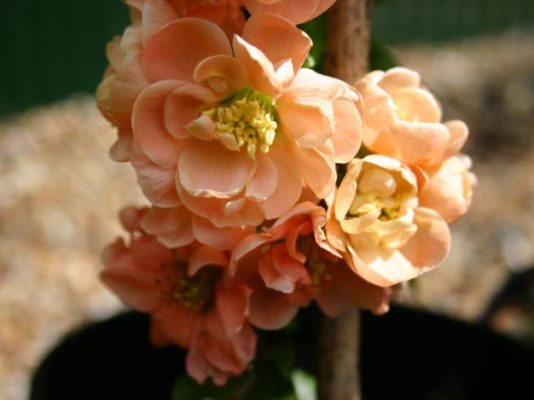
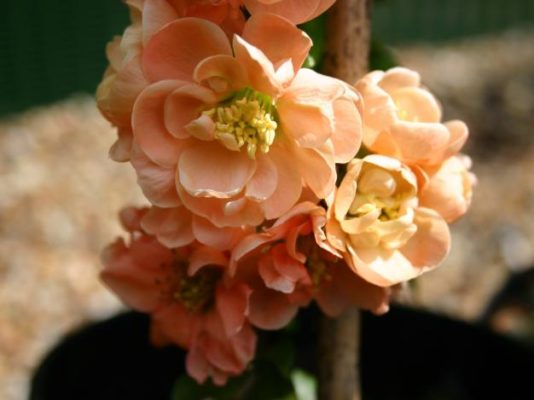
Gentle Geisha Girl bushes bloom in partial shade
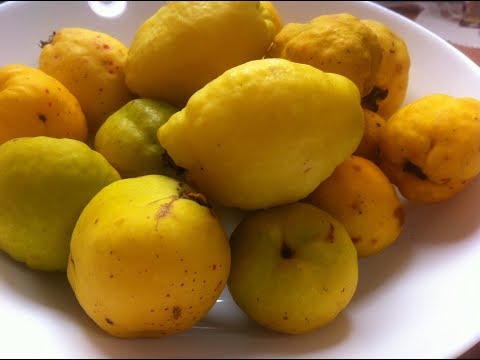

Some chaenomeles are lemon-shaped
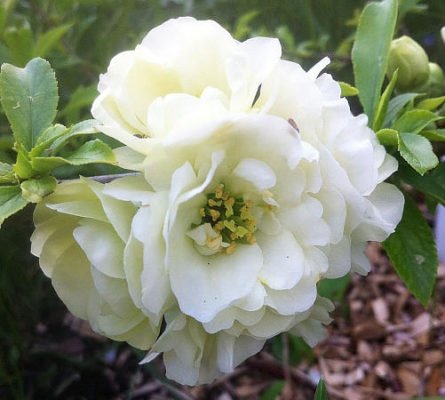
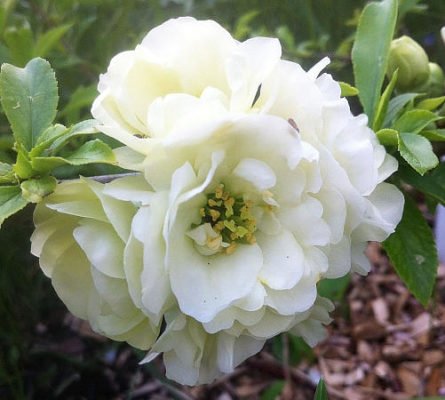
Slow growing Yukigothen blooms with a delicate white foam

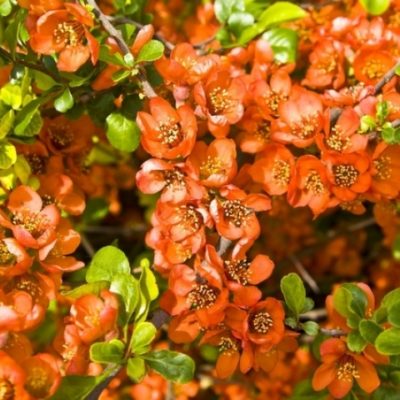
Yielding variety of chaenomeles Tsido
Chaenomeles fruits resemble quince in appearance, and in terms of aroma and richness with vitamins, they compete with lemon. With their unpretentiousness and noble beauty of delicate flowers, they convey the spirit of the East. And it is not difficult to grow this beauty and benefit in your garden.
- Author: Armenuhi Poghosyan
Hello! There are so many different topics in the world! I hope that by cooperating with this site, I can share my thoughts and knowledge with others. Rate the article:
- 5
- 4
- 3
- 2
- 1
(1 vote, average: 4 out of 5)
Share with your friends!
What kind of plant is chaenomeles
Japanese quince is native to Japan, but has long been cultivated in many countries of Asia and Europe.
Bush structure
The quince bush can reach a diameter of three meters, it has a dense crown with dense foliage, but most often the size of the bush is slightly more than a meter. Young shoots grow scaly, but then become glabrous, not pubescent, colored brown, covered with sparse thorns. The leaves are most often obovate, several centimeters long and wide. In adult plants, they are colored dark green.
The young bush grows slowly, but lives for several decades. The plant is thermophilic, but it can grow in cold regions, normally withstanding frosts down to -30 ºC under the snow cover. It is a drought-resistant plant that requires almost no watering.
Flowering time when the fruits ripen
Chanomelis flowers are unusually beautiful. They are white, pink, orange or bright red in color, up to 5 cm in size, there are from 2 to 6 specimens in the shield. Flowering occurs in late spring and early summer, lasts about three weeks. In the middle of autumn, edible fruits ripen, and the first fruiting occurs already in the third year of the bush’s life. The fruits have an almost regular rounded shape, less often pear-shaped, yellow-green in color, 3–6 cm in size, covered with a waxy coating. True, seeds can take up to the middle of the fruit volume. About 2 kg of fruits are harvested from each bush, which are able to ripen in room conditions at low temperatures and are stored for a long time, until spring.
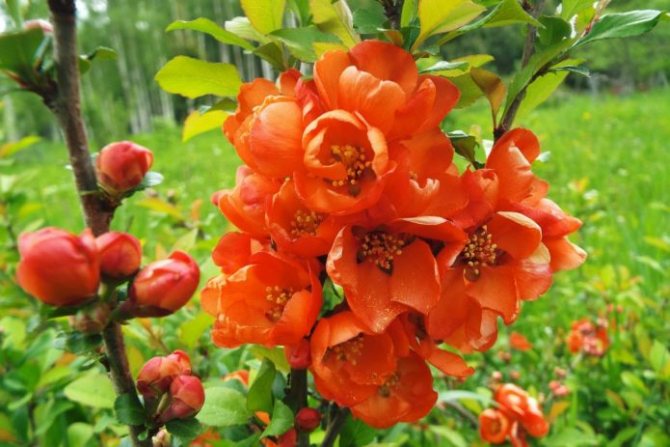

Japanese quince flowers are truly adorable
Useful properties of “lemon apples” for health
It is not difficult to grow a crop, and the fruits are of considerable benefit. And let the taste of quince – for an amateur, it is not in vain called the northern lemon: so, it contains even more ascorbic acid than a real lemon, it contains a variety of vitamins and biologically active substances. A variety of dishes are prepared from quince; fresh because of its astringent taste, it is almost never consumed.
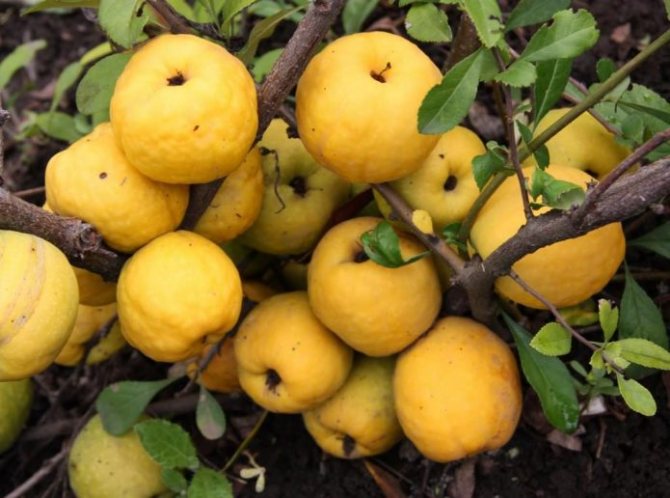
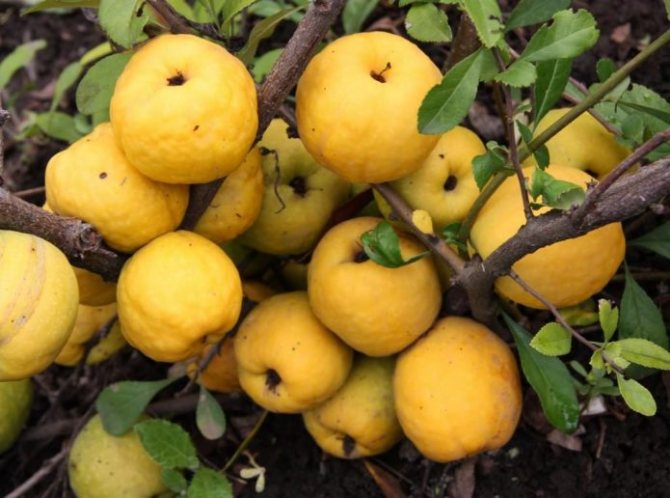
The fruits of the Japanese quince are small, but there are a lot of them.
Popular varieties of chaenomeles
Among the dozens of known varieties, the following are considered the most popular:
- Crimson & Goll (often used to make hedges);
- Pomegranate bracelet (short but productive shrub);
- Henomeles Simoni (very decorative, but not hardy enough);
- Jet Trail (one of the few varieties that does not have thorns on the branches);
- Quince Vesuvius (bush with a very spreading crown);
- Chaenomeles Nivalis (variety with white flowers, rather voluminous bush).
Shrub description
Bushes in height can reach 2,5 – 3 meters… The foliage changes its color with age: young trees have a bronze tint of foliage, but the older the tree, the more green the leaves become.
Quince flowers are large (about 4,5 – 5 cm), red in color, in the conditions of the Moscow region appear on the shoots before foliage. The following interesting detail should be noted: buds begin to bloom unevenly, and the bush blooms for over a month in total.
The first buds appear in Chaenomeles in the first decade of May. The fruits of the shrub are edible, their color is yellow, bright, ripe fruits reach 5,5 – 6 cm in diameter.
The shoots of the bush do not cover, even if the thermometer drops to -28 -30 degrees… True, the upper buds can suffer from this cold, but the quince itself as a whole will not suffer.
Shoots of this bush grow slowly, during the season they can grow by 4 – 5 cm. The bushes are propagated by root suckers, seeds, layering or cuttings.
In landscape design, Japanese quince is used as hedges, and they are also used in single or group plantings.
The most famous varieties of this shrub are Papel, Gaillardi, Malardi, Cameo.
How to grow Japanese quince in the garden, in the country
For planting chaenomelis, you need to choose a well-lit area. However, the shrub can exist in partial shade, but almost does not bear fruit. The composition of the soil for quince does not matter, but it must be fertile enough. Quince does not grow only on open limestones and salt licks. In cold regions, it is important to choose a place where snow easily accumulates, which shelters the bushes from frost.
When and how to plant
Planting quince is possible both in spring and autumn, and seedlings with a closed root system can be planted in summer. Spring planting is preferred, soon after the snow melts and the soil thaws. Two-year-old seedlings take root best of all. When planting several bushes, the distance between them is maintained at least a meter, in accordance with the characteristics of a particular variety (usually 3-5 bushes are planted in a line). Planting pits for spring planting are prepared in the fall. In Japanese quince, the roots go far into the depths, therefore, with a hole diameter of about half a meter, its depth is made slightly deeper.
It is best to fill the planting hole with a mixture of leaf earth, sand and peat (2: 1: 2), adding 200 g of superphosphate, a couple of handfuls of wood ash and 1,5 buckets of humus to the mixture. If the soil is too acidic, add up to 300 g of chalk or lime. Planting technique is common for shrubs, taking into account the fact that the root collar should eventually be at the level of the soil. If the seedlings are purchased in containers, they are planted without burying. Usually there are no problems with the engraftment of Japanese quince.
Landing requirements
There are certain conditions to the place and soil that must be taken into account when planting Chaenomelos:
- the optimal time is from March to the end of April, when the earth has already warmed up enough, in different districts of the Moscow region it varies, with autumn planting there will be no time for rooting;
- sunlight should freely enter the place where it is planned to plant the quince;
- gusts of the north wind should not reach the seedlings;
- the groundwater should not be near, they can flood the plantings, lead to rotting of the roots;
- ordinary soil is suitable, acidity should not be high, you can reduce it with lime;
- you need to prepare the land in advance – in the fall, get rid of weeds, dig up the soil, add compost and inorganic fertilizers, it is advisable to choose potassium-phosphorus;
- it is necessary to plant immediately correctly and efficiently, since the plant does not tolerate displacement to another place poorly.
And also Japanese quince seedlings planted in the Moscow region must meet certain conditions:
- be no older than two years;
- the height should not exceed 30 cm;
- the best seedlings are in containers, the root system of which is reliably protected, this will protect them from drying out;
- each specimen must have at least three well-developed shoots.
The planting process
For the successful cultivation of Chaenomelos in the open field, a number of rules should be followed:
- dig a hole having the same length and width from 50 to 60 cm, depth – 60 cm, its parameters can be adjusted depending on the size of the seedlings and their number;
- the composition of the earth must be broken into 1/3 with a mixture of superphosphate, humus and ash;
- the root system of the quince must be separated from the fertilizers with a layer of soil;
- the seedling must be placed in the pit so that its roots are at the level of the upper part of the pit;
- the roots must be carefully straightened, sprinkled with earth and compacted with the soil layer;
- planted quince should be well watered with a bucket of water;
- do mulching with sawdust or peat if the land is prone to weathering.
Gardeners need to take into account that cross-pollination is characteristic of Chaenomelos, so it is advisable to plant 2-3 shrubs of the same species nearby, after which the yield will increase significantly.
Breeding methods of Japanese quince
Quince reproduces in all ways typical for shrubs.
Does the shrub propagate by seed
Seed propagation is considered the most reliable, albeit troublesome, method. The seeds are sown at the end of winter like vegetable seeds in pots or boxes, after a month and a half they dive, and at the end of May they transplant “seedlings” into open ground. In order for the germination of seeds to be decent, they must be subjected to stratification: keeping for 2-3 months in wet sand at 5-10 o C. You can do it even easier: immediately after harvesting, remove the seeds and, after washing, sow directly into the garden. True, in this case, only well-ripe fruits should be used.


Quince seeds are quite large
Cuttings from young branches
Propagation by cuttings is not difficult at all. At the beginning of summer, pieces of young shoots are cut with the remainder of last year’s wood (“heel”). It will be safer to soak them for a day in any growth stimulator, and then plant them at an angle of 45 ° in a mixture of peat and sand (1: 3). After a month, the cuttings take root, and, unlike seed propagation, the seedlings fully inherit the characteristics of the variety.
Inoculation
You can plant Japanese quince not only on quince, but also on hawthorn, pear or mountain ash. As a rule, they use the method not of copulation, but of budding (that is, inoculation with a kidney), it is carried out in August. A varietal bud is grafted into a T-shaped cut of the rootstock at a height of about half a meter from the ground. In the spring, a new shoot appears from the bud, which must be well looked after in the first couple of years, including reliably covered for the winter.
Layers in the ground
Reproduction by layering is carried out in the same way as in the case of, for example, currants. A well-located branch of an adult bush is bent to the ground in the spring, pinned, lightly sprinkled with soil and watered during the summer. Each bud will develop a new plant. The next year they can be cut off and planted.

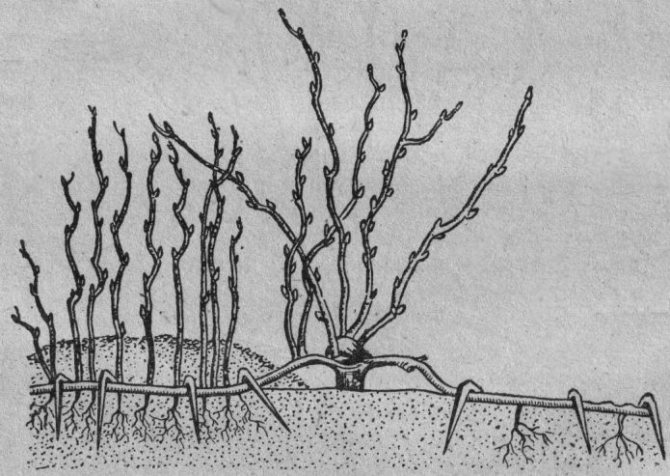
Reproduction by layering is very simple
Reproduction by root offspring
Most varieties of quince give a lot of growth, which is removed, but if necessary, it can be used as planting material. The best specimens should be at least 10-15 cm in diameter and at least 5 mm in diameter. They try to dig them up together with the roots and transplant them to the right place. The only trouble is that the offspring have few roots, so you need to take care of them (water, loosen, mulch) carefully.
Growing quince and year-round care
So that the Japanese quince does not get sick and grow quickly, it is necessary to choose the right place for planting, so that the bush is protected from the wind, but at the same time it receives enough sunlight. The root system of a fruit tree is located almost on the surface, plunging into the ground by about 70 cm, but at the same time it grows up to 5 m wide.
Therefore, if you plant a tree next to a pear or apple tree, then you need to maintain a distance of 5 meters so that the quince has room to grow. Transplanting it is extremely undesirable, since it does not like changing places and can wither away. Therefore, you must immediately decide on the place where the quince will grow.
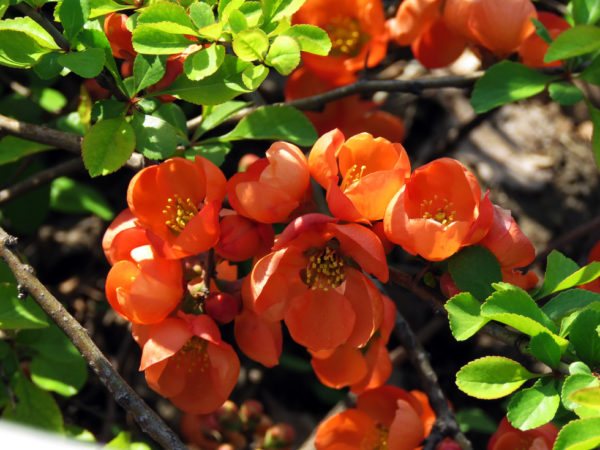
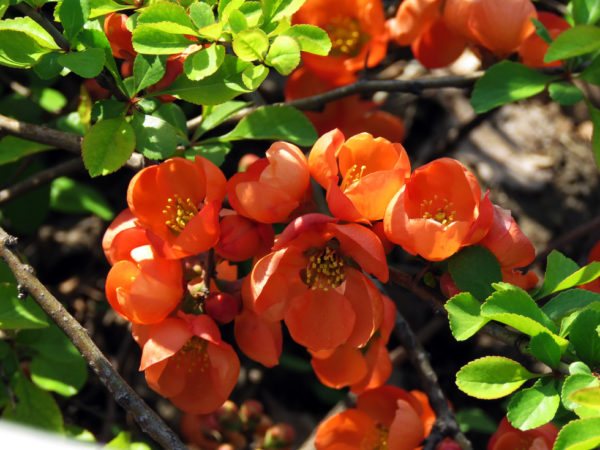
Another important feature of a shrub tree is that it can only grow in black soil, turf, clay soil or loam. This should also be taken into account when planting, and if necessary, add clay to the bottom of the hole so that the tree receives the substances it needs. An excellent place would be the ground, where a sufficient amount of moisture accumulates.
- We dig a hole up to 40 cm deep, 60 cm wide and fertilize the planting site with 50 g of ash and 150 g of superphosphate.
- We fill the hole with earth, moisten with a bucket of water and leave for 3-4 days.
- We remove several handfuls of earth from the hole so that the roots are completely immersed in it, and the root collar remains at ground level.
- We straighten the roots and add a seedling on all sides so that it stands firmly in the hole.
- We form an earthen roller with a belt for water 5-10 cm high around the perimeter and gradually pour 3-4 buckets into it.
- We spread the rotted sawdust with leaves on the moistened ground. In the spring, a 5 cm layer is enough, and in the fall you need to raise it to 10 cm.
Depending on the variety of Japanese quince, it can be planted before or after the end of cold weather in the soil that has had time to warm up. However, it is recommended to do this in late spring, when there is no likelihood of a return of night frosts. Then the tree will have time to get stronger and will survive the winter perfectly.
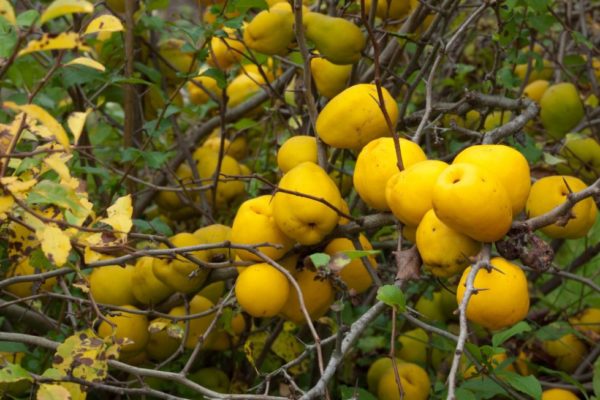
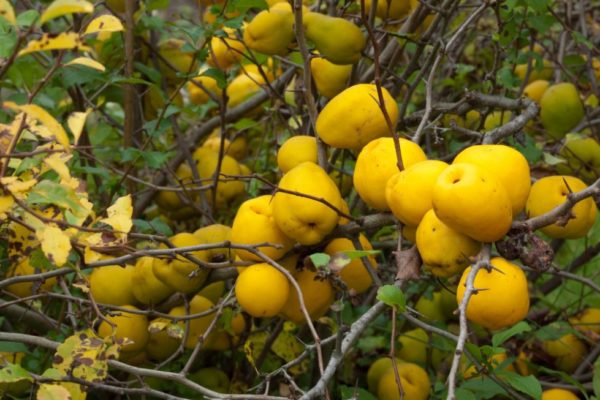
In order for young seedlings to grow quickly, they must be watered at least 3 times a year. Watering begins before flowering, then in June and ends in August. Along with this, it is necessary to fertilize with fertilizers, spray from pests and various diseases along with the treatment of other trees.

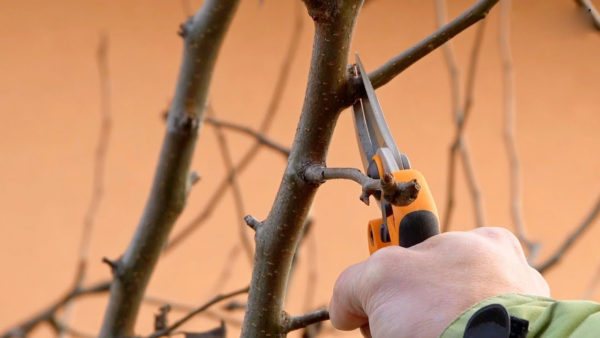
Diseases and pests of an ornamental bush: if the leaves dry and turn yellow
Despite the unpretentiousness of the Japanese quince, it can be exposed to diseases and attacks of pests, which leads to drying of the leaves, followed by their premature abscission, lack of normal flowering, etc.
Aphids bring the most trouble: when it appears, it is better to immediately apply chemical or biological insecticides (Fitoverm, Biotlin, etc.). Other insects (for example, the moth) and ticks rarely attack the quince.
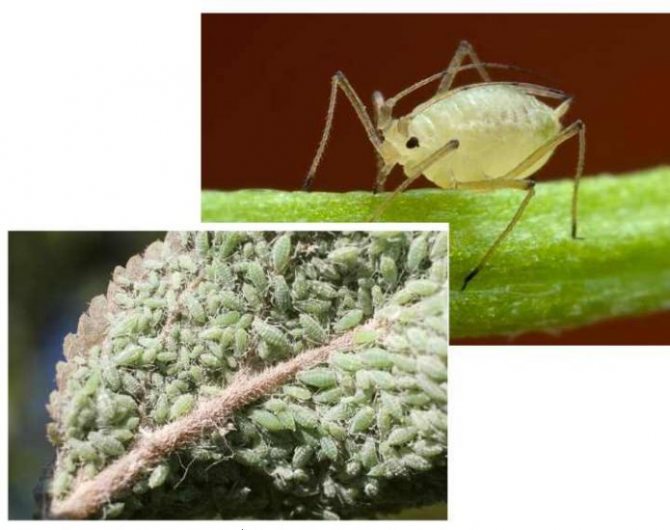
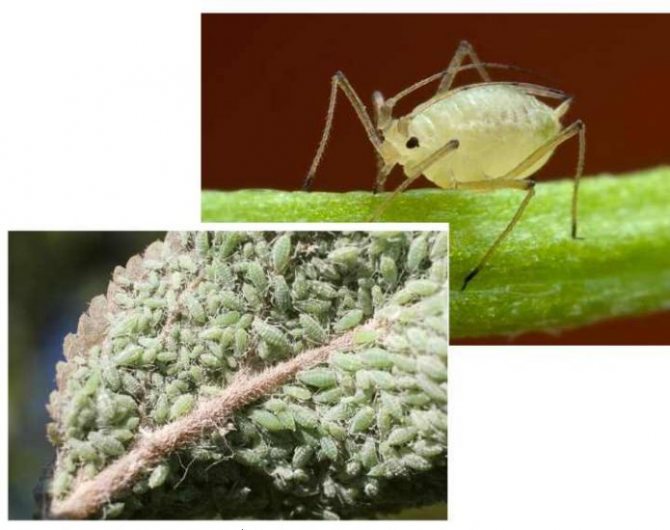
Ive is harmed by the same aphid as the apple tree
Among the diseases that are especially common in cold and rainy summers, one can note:
- leaf necrosis (starts with a gray bloom, then the leaves dry up);
- ramulariasis (brown spots on the leaves);
- cercosporia (dark brown round spots that quickly capture the entire leaf and lead to its death).
The main remedies for the treatment of quince from diseases are Fundazol and Bordeaux liquid. They also save shrubs from moniliosis and powdery mildew. For preventive purposes, spraying is carried out two weeks after the end of flowering, and then again in a month.
Features of cultivation and care
Caring for Chinese quince is easy. It is limited to maintaining cleanliness in the trunk circle, periodically loosening the soil, watering, fertilizing and pruning.
In the first season after planting, the tree is watered every 10-15 days (depending on the weather), the norm is about 15 liters. Fruiting Chinese quince does not need such frequent watering – it suffices five times per season, but the rate increases to 30–35 liters (the last time is 50–60 liters):
- when the leaves are blooming;
- during the formation of buds;
- two weeks after the end of flowering;
- at the time of the formation of ovaries;
- about two weeks after harvest.
Of course, watering intervals are adjusted based on how often it rains and how hot it is outside.
fertilizers
There is no need to fertilize the tree in the first year after planting. Further, before the first fruiting, they are limited to the introduction in the middle of spring and at the end of October of humus (5–7 l) and mineral fertilizers – respectively nitrogen (15–20 g) and phosphorus, potassium (20–25 g). Fruiting Chinese quince is fed three more times, at about the same time as watered. Any fertilizer is suitable for fruit trees.
Trimming
Chinese quince bears fruit on the shoots of the last season, therefore, shortening pruning is not practiced for them. In the spring, they are limited to only sanitary pruning, removing broken, frozen, dried shoots. To increase the size of the fruit, experienced gardeners recommend leaving no more than 10 fruiting branches, cutting off the others to the point of growth.
Pruning takes place according to the following rules:
- With the onset of spring, damaged, broken, dry branches are removed.
- In order for the tree to have a beautiful shape and decorative appearance, shaping pruning is carried out. In addition to aesthetic goals, she also has the task of increasing the size and quality of the fruit.
- Since the shrub should not have more than 10 fruiting branches, the remaining branches, one year old, are removed.
- Do not leave side shoots of the current year.
- The ring cut removes all thickening crown and shoots.
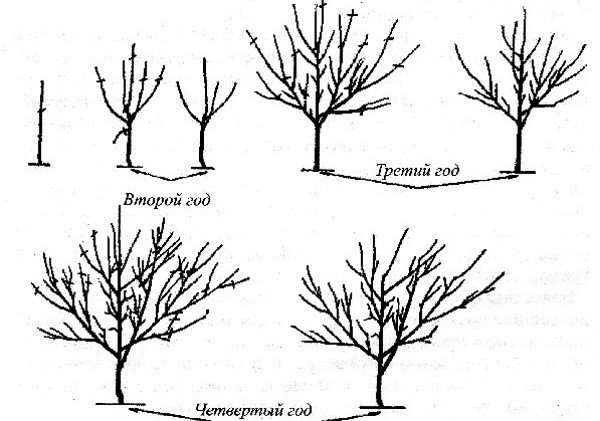
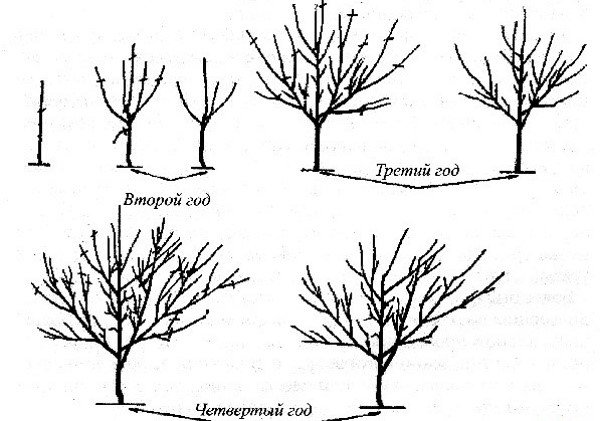
It takes 4 years to form the crown of a Chinese quince, by which time the tree, as a rule, begins to bear fruit.
Harvest at a temperature of 0-2 ° C is stored for up to six months. If there are few fruits, each is wrapped in foil or soft paper. A large crop is stored in boxes, sprinkled with sand or sawdust.
Preparation for winter includes cleaning the tree trunk circle from plant debris, mulching it (a layer about 10 cm thick and up to 20 cm thick at the trunk) with peat or humus, fallen leaves, spruce branches. The base of the trunk is wrapped in several layers of burlap or covering material that allows air to pass through. When enough snow falls, it is scooped up to the tree, creating a snowdrift.
Features of growing Japanese quince in the Moscow region and the Urals
When growing Japanese quince in cold climates, the main thing is protection against freezing in winter: in summer, it grows normally in almost any region. So, in the middle lane and in the Moscow region, when growing early-ripening varieties, they have time to give a good harvest, which, if not ripening on the bushes, is quickly ripened during storage: after all, the fruits must be removed in September. In the Moscow region, you can take the risk and not cover the bushes for the winter: in a normal winter there is enough snow. But if its loss is delayed, freezing of young shoots and fruit buds is possible. The bush will recover over time, but there may be a break with fruiting.
In the Urals, as in most of Siberia, it is necessary to plant the earliest varieties, because the harvest in these regions has to be at the very beginning of September. Shelter of bushes for the winter is mandatory: both coniferous spruce branches and non-woven materials are used here.
General characteristics
Despite the fact that the eastern visitor came from Japan, the Japanese quince feels great in the Moscow region and in the conditions of central Russia. This small shrub belongs to the genomelos genus, Rosaceae family. The unusually attractive decorative appearance of the plant, combined with delicious fruits, quickly made it one of the most popular crops, not only in gardening, but also in landscape design.
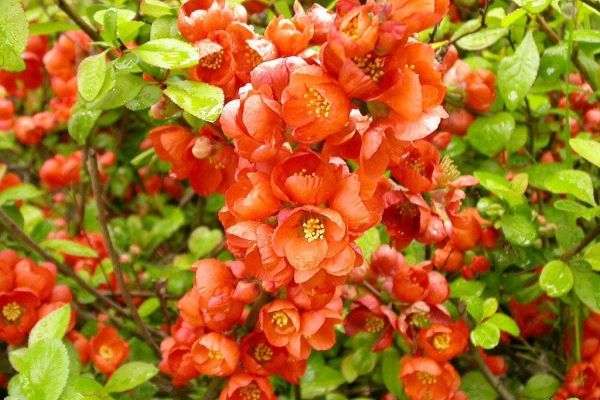
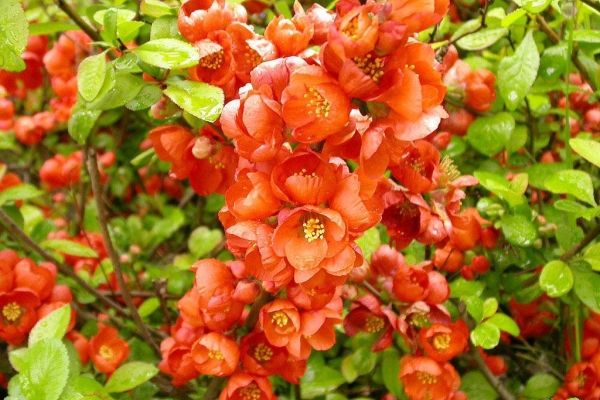
The shrub has magnificent flowers that differ in shape and color palette, and no less attractive variety of leaves. Quince flowers are rather large, with a double structure. The color and shape of the inflorescences depends on the variety, as well as the external characteristics of the leaf plates. Depending on the climatic conditions of the growing region, the bush can reach up to 3 m in height. In the temperature zone of our region, most often there are small shrubs, about one and a half meters high, with unusual bright flowers and leaves.
Quince shoots are flexible and resilient, depending on the variety, they can be covered with small thorns. As the plant grows and develops, the color changes from green to brown. Fruits ripen in autumn. Bright yellow large fruits with bumpy skin are also called “northern lemon”. Indeed, in terms of the ascorbic acid content, the fruit is only slightly inferior to citrus. Astringent taste and hard, practically devoid of juice, the pulp deprives the fruit of the attractiveness of fresh consumption, but quince jams and compotes are simply unusually tasty.
